- Administrator
- Albums and Singles
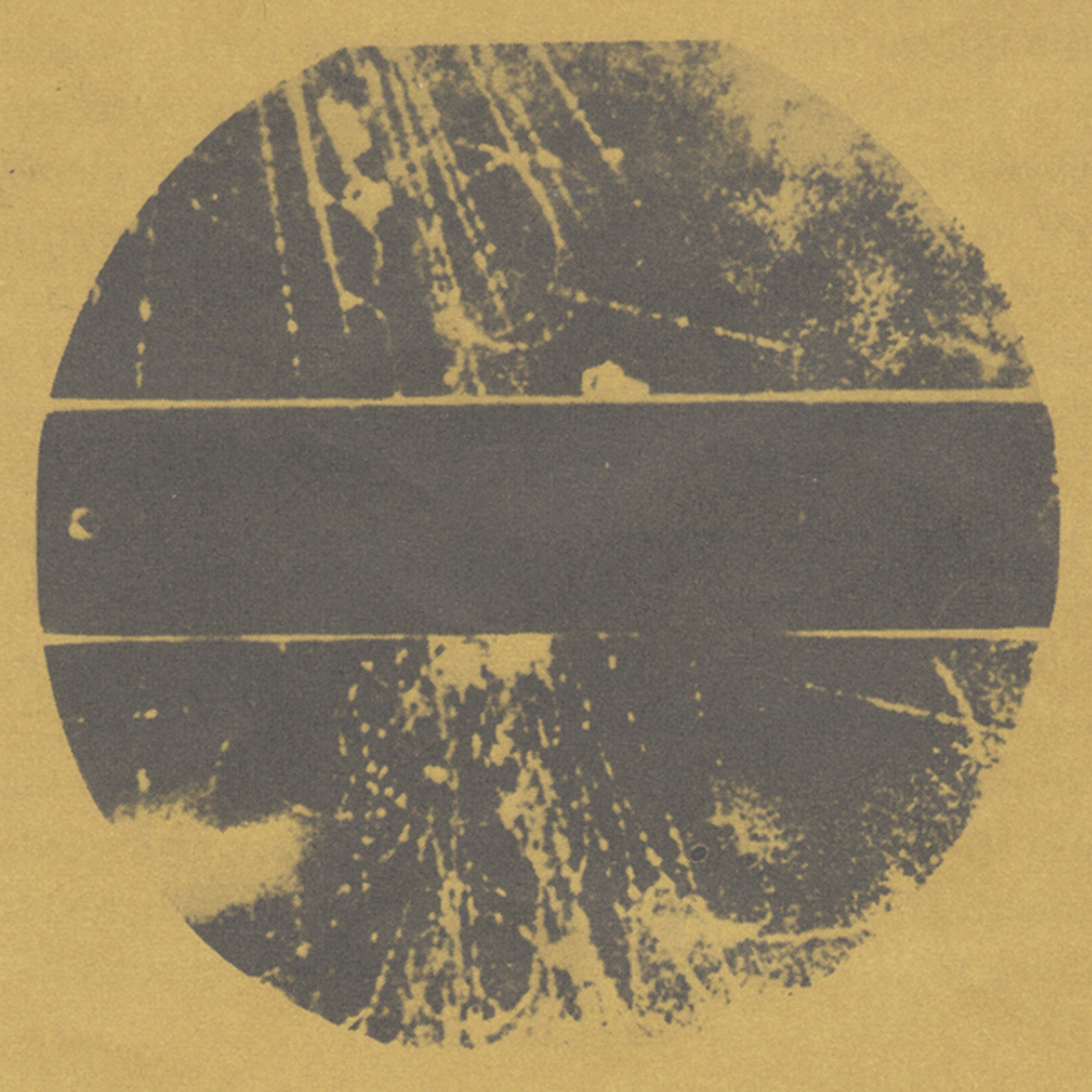 I think I can safely guarantee that no one familiar with Ren Schofield’s work has ever wondered what a new Container album might sound like, nor have they likely exhausted much time wondering about what its title would be: LP is yet another dose of no-frills, bludgeoning, percussive, and noise-damaged anti-dance.  The only real change is Schofield has become a bit more skilled, a bit wilder, and a lot more aggressive since his last album.  Part of me admittedly misses the more "human"-speed, mid-tempo grooves of past Container albums, but LP is probably Ren’s best work in this vein by a landslide, as he has trimmed down his song lengths and dramatically ratcheted up his visceral intensity.  This is an absolutely bulldozing album.
I think I can safely guarantee that no one familiar with Ren Schofield’s work has ever wondered what a new Container album might sound like, nor have they likely exhausted much time wondering about what its title would be: LP is yet another dose of no-frills, bludgeoning, percussive, and noise-damaged anti-dance.  The only real change is Schofield has become a bit more skilled, a bit wilder, and a lot more aggressive since his last album.  Part of me admittedly misses the more "human"-speed, mid-tempo grooves of past Container albums, but LP is probably Ren’s best work in this vein by a landslide, as he has trimmed down his song lengths and dramatically ratcheted up his visceral intensity.  This is an absolutely bulldozing album.
For a former noise artist, Schofield has very unusual approach to his strain of noise-damaged dance music.  For one, it is not particularly noisy: the 7 pieces on LP are certainly unmelodic and corroded-sounding, but Ren tends to conjure up his chaos in quite a controlled way.  There are no blasts of white noise or electronic entropy, just a lot of meticulously crafted grooves enhanced by some very blown-out textures and plenty of machine-like, relentlessly inhuman repetition.  Equally noteworthy is the fact that Schofield seems to be quite an astute student of techno rather than any kind of dabbler, as he rarely even nods towards simple house beats and unwaveringly manipulates the dynamics of his grooves like a damn wizard: elements are constantly and systematically added and subtracted in service of maximizing impact at all times.  Ren never lazily rides a groove.  Once in a while, he might slow down or get a bit quieter, but it is always to either make space for a cool motif or to set the stage for the next onslaught.
Aside from those few pieces that slow down enough to lock into satisfying head-bobbing grooves and give Ren room to unleash his fine arsenal of squawks, whines, crackles, and grinding noise textures, the bulk of LP careens along at a breakneck pace.  He definitely seems to relish maintaining a pace that is just a little too fast and much too manic to fully resemble music intended for human dancing.  That impish propensity is what makes LP so compelling for me, as Schofield has found a way to make the beats themselves feel like an assault without resorting to brute force or hackneyed industrial tropes.  These pieces are certainly propulsive and fun, but they are also a bit too deranged and relentless to elicit anything resembling a "good time" vibe.  That, of course, makes it even more fun for me.  Apparently, this album is the one most closely resembles a Container live show, which makes me desperately want to seek one out: Schofield has ingeniously staked out the perfect blend of "I came to get this party started" and "I came to end this party and possibly destroy the building."
Choosing a highlight is hard, as each of these pieces is very much cut from the same cloth and strong hooks are simply not a part of Ren's agenda: he just locks into a groove, kicks ass, and then moves onto the next song long before he overstays his welcome.  LP is just 7 flavors of streamlined, dynamic, and perfectly chiseled pummeling.  If I had to pick, however, I would say that the stumbling, mid-tempo "Calibrate" locks into an especially satisfying locked-groove-style beat.  Another strong moment is the album's "single": the throbbing, skittering, and out-of-control "Eject."  The whole album is quite solid and utterly devoid of anything resembling filler or a misstep, however.  If LP can be said to have a flaw, it is only that Container's niche is an incredibly specific and limited one.  Schofield definitely makes the most of those rigid constraints though–I cannot think of a single aspect of LP that possibly could have been better executed.
Samples:
 
Read More
- Administrator
- Albums and Singles
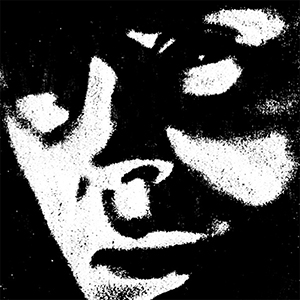 Ramiro Jeancarlo's solo project has only been active for a few years, but with these releases the Miami artist has refined his own insular version of electronic music with the assistance of a sprawling vintage synth collection. This album captures his two primary styles: weird electronic experiments and catchy, song-like pop outings. Even though the overall feel may be different, Jeancarlo manages to tie them together to result in a diverse, yet unified sounding album.
Ramiro Jeancarlo's solo project has only been active for a few years, but with these releases the Miami artist has refined his own insular version of electronic music with the assistance of a sprawling vintage synth collection. This album captures his two primary styles: weird electronic experiments and catchy, song-like pop outings. Even though the overall feel may be different, Jeancarlo manages to tie them together to result in a diverse, yet unified sounding album.
In general, the first half of El Mago En Ti is where the abstract and more disjointed synth experiments happen.The opening of "Drowning Feathers" keeps time with snappy, sparse percussion and sweeping keyboards, but the overall sound is sad and desolate, with the nearly indecipherable vocals adding to this sense of seclusion.Jeancarlo slowly adds more and more to the mix to flesh it out, but it retains its cold, disoriented feel to it.Comparatively, "Spherical Aberration" has a doomier, more dissonant sense throughout.With an isolated and uncomfortable sounding vocal performance, the piece is largely dominated by a menacing, bass heavy electronic sound that gives a distinct rawness.
The B side of the record is where the more conventional sounding compositions are placed."Addiction" may have a thin rhythm track and simple bassline, but with the addition of vocals and a shimmering synth melody, it results in a piece that sounds more like a conventional song than an electronic experiment."Anima Sola" is also driven by a more up-tempo drum machine, and focused largely on a noisy, buzzing analog synth pattern.It is still dark and depressive overall, but the result is more easily latched on to because of the sense of composition.
The second half may be overall somewhat more musical, Jeancarlo still sneaks in an obtuse moment with "Fistful Questioning."There is a loose sense of organization, but the focus is largely on rapid skittering and pulsing synthesizers.Considering the overall mix of the piece is a bit strange as well, it stands out strangely as a throwback to the first half of the record.He closes the album with "La Gran Evasion," the closest he manages to come to traditional electronic music.An instrumental work with more conventional rhythm sequences and a ghostly synth lead, it is an extremely strong, if slightly repetitive (like most dance music) way to end a superlative album.
With a nice balance between experimental miniatures on one half and conventional songs on the other (and an appropriate amount of crossover), El Mago En Ti is a strong piece of eclectic electronic music.With just enough hooks to grab my pop loving side, but a wide berth of experimentation and eccentric sounds, the stylistic balance is very strong and pulls the record together extremely well.
samples:
 
Read More
- Administrator
- Albums and Singles
 Florida is not known for hosting a secret enclave of synth bands, but this split cassette tape indicates that there are at least a few projects hiding amongst the tourist traps and meth labs. Burnt Hair and Ars Phoenix both work with similar instrumentation but the final product differ drastically between the two. The latter makes for catchy, if a bit bleak, pop songs while the former is depressive, bedroom electronics, resulting in a wonderful combination of similarities and differences.
Florida is not known for hosting a secret enclave of synth bands, but this split cassette tape indicates that there are at least a few projects hiding amongst the tourist traps and meth labs. Burnt Hair and Ars Phoenix both work with similar instrumentation but the final product differ drastically between the two. The latter makes for catchy, if a bit bleak, pop songs while the former is depressive, bedroom electronics, resulting in a wonderful combination of similarities and differences.
Being a former resident of the state, these two artists have a sound that suits their geographic locations within Florida.Burnt Hair, from the larger and more inland city of Jacksonville, has a fittingly isolated and lonely sensibility to it.A larger city where the metropolitan and redneck meet is sure to be despairing for any artist.Conversely, Ars Phoenix hails from the east coast of Vero Beach, and their more pop-oriented sound fits the fun and tourist-y feel, at least superficially.But, just like the region itself, there is a distinct darkness that lurks behind the sunny melodies and memorable choruses.
The four songs on Burnt Hair's half of the tape are largely characterized by sparse, dour synthesizer passages and muffled vocals that sound like they were recorded from a closet on the other side of the studio."Tired Fingers Slip" exemplifies this, with the addition of a basic drum program that gives it a lurching sense of rhythm while still retaining an icy character.On "Stems" the duo of Matthew and Trenton Tarpits put a bit more emphasis on the programmed rhythms and a utilize a simple toy piano like melody that goes along way in its frigid, basic structure.The closing "Left to Chance" is the only time that the sound takes on a less depressive character.It may only be in relative terms, but the more pronounced drum machine and louder vocals, combined with the noisier keyboard passages result in a more aggressive, standout piece.
Ars Phoenix, for their four songs, continue to build upon the dark, yet engaging synth pop style they demonstrated heavily on their recent Violet Rain album.The fast pace of "Desiccation" contrasts BH's half of the tape, and while the vocals are echo-laden here as well, they are much more discernible and the duet vocals of Jon Glover andCaitlin Ollinger are just as memorable here as they were on the last album."Beckett’s Row" takes on a slower pace, but with the song’s up front vocals and expansive melodies it results in a very memorable composition.For "Minister Edwards," what sounds like a guitar becomes one of the central instruments, providing an excellent melodic lead and, with its liberal use of reverb, takes on a bit of a shoegaze quality.
The two halves of Shinju may differ in style, but pairing these two artists together makes for a diverse, yet still overall somber release.Burnt Hair's depressive bedroom synth sound hits the spot perfectly on those gray, overcast days, and like their previous album, Ars Phoenix's melodic and catchy sound continues to keep my attention, while still maintaining a sinister undercurrent that gives it significant depth.It may be a bit bipolar, but it is an excellent split tape.
samples:
- Tired Fingers Slip (Burnt Hair)
- Stems (Burnt Hair)
- Desiccation (Ars Phoenix)
- Minister Edwards (Ars Phoenix)
 
Read More
- Administrator
- Albums and Singles
Bliscord is the official new project from former Light Asylum synth virtuoso, Bruno Coviello. Check out the new music video for "Ready 2 Burn" featuring vocals by Michael Beharie. The video was directed & edited by Daniel McKernan incorporating hand-processing techniques of direct filmmaking with 16mm found footage from a tutorial on what children should do: "In Case of Fire." The track is slated for release on Formlessness Press, details TBA.
Read More
- Administrator
- Albums and Singles

DAVID SHEA
PRISONER
LABEL ROOM40
CAT # DRM431
FORMAT DIGITAL
RELEASE DATE 30 MAY 2015
STREAM (#2 + #3)
ARTIST ESSAY
STORE
- One of an ongoing series of remastered reissues of David Shea's iconic works on Room40, Prisoner was originally released 1994 on the Sub Rosa label and was Shea's first large ensemble recording.
- Based on Patrick McGoohan's TV series The Prisoner and the title is taken from the graphic ‘Prisoner’ in the last frames of the final episode.
- Originally planned as a follow up to Shock Corridor and to be released on the new Tzadik label by John Zorn, it was conceived as a full ensemble work based on each of the 17 episodes.
- Shea's third release for Room40, following 2014's Rituals and a reissue of Satyricon.
Read More
- Administrator
- Albums and Singles

ARTIST CHIHEI HATAKEYAMA
TITLE MOON LIGHT REFLECTING OVER MOUNTAINS
LABEL ROOM40
CAT # RM465
FORMAT CD/DIGITAL
RELEASE DATE 30 MAY 2015
VIDEO (Prince Of The Sea)
AUDIO (Prince Of The Sea)
STORE
- Tokyo’s Chihei Hatakeyama draws broadly from aesthetic references, that traverse music of the past 30 years - loosely echoing the gliding motions of My Bloody Valentine, Ride and Cocteau Twins.
- Strummed acoustic guitars are cloaked in a soundscape that suggests a dwelling in the urban; sirens and voices clearly emerging as the piece meanders.
- Moon Light Reflecting Over Mountains is Hatakeyama's third release for Room40, following from previous efforts Mirror and Saunter.
Read More
- Administrator
- Albums and Singles
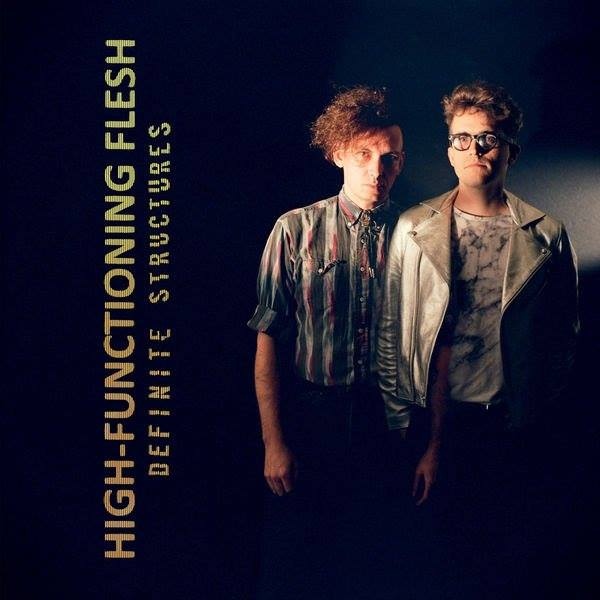 Last year's A Unity of Miseries-A Misery of Unities grabbed me quickly and became one of my absolute favorite albums that came out in 2014. The songs that were re-recorded from their demo tape were excellent, and the new compositions that premiered on that record were even stronger. So of course I had high hopes for the Susan Subtract and Greg Vand's sophomore record, and I am not at all disappointed. Strong beats, glorious pawnshop synth sounds and memorable songwriting come together brilliantly on Definite Structures.
Last year's A Unity of Miseries-A Misery of Unities grabbed me quickly and became one of my absolute favorite albums that came out in 2014. The songs that were re-recorded from their demo tape were excellent, and the new compositions that premiered on that record were even stronger. So of course I had high hopes for the Susan Subtract and Greg Vand's sophomore record, and I am not at all disappointed. Strong beats, glorious pawnshop synth sounds and memorable songwriting come together brilliantly on Definite Structures.
Quirky is not usually a term I associate with music in a good way, but honestly it is the best way to describe HFF.Too often quirky is a transparent attempt to be weird or random as an attention-seeking gimmick for bands that lack skill and/or talent.This duo's weirdness seems completely natural and unforced, however, and is simply another asset that helps them to stand out singularly in a world of imitators.Even as part of the big three LA bands leading the outsider EBM scene they are the odd ones out:Youth Code do the tattooed hardcore punk thing, Pure Ground have their wasteland dystopia vibe going, but HFF are the strange children of the '80s, doing their own thing and loving it.
In the year since their debut album came out, they have already made strides as far as cultivating their identity and sounding more self assured.While there are a litany of bands that could correctly or incorrectly be cited as influences on their sound, never do they sound like anyone else in particular.Via their unpopular Ensoniq synth fetishism and low fidelity samples, they have created their own sound and push it amazingly.
A defining feature of Definite Structures is that it hardly relents at all:all nine songs are pounding drums, jagged digital synthesizers and Subtract’s snarling punk yell.The closest thing to an introspective moment is the album opening "Hunger Cries."With the BPM turned down a bit and a slightly more restrained vocal performance, it takes on a nice chiming synth pop feel.All I could picture is the awkward, black veiled '80s goth kids dancing (awkwardly) at some weird prom in a John Hughes movie that was never made."Grey Scent" is only a bit less forceful than much of the album because of the calmer vocals and monotone half of its catchy chorus.
That is one of the other most striking facets of this album:simply how catchy the songs are.The first album showed a marked improvement between the songs from their demo compared to the ones recorded for that album, and this one is a similar jump.The duo's songwriting ability was never lacking, but they manage to create such memorable choruses and melodies.
Aggressive, dance floor packing rhythms and bass lines are what this album is all about though."Confuse the Call" appears here in a different mix than on the Strategies Against the Body compilation earlier this year, stripped down and with the emphasis placed on the drums and vocals, it hits even harder."Lattice of Coincidence" is especially memorable in the duo's pairing of a martial, aggressive bassline and a lighter, almost regal synth melodies, blending perfectly into its vocal-centric chorus.On "The Plunge" a similar mix of jagged synth pads and insistent scatter-shot drum programming contrasts excellently, propelled by Subtract's dry throated aggro screams and sputtering samples of unknown origin.
On an album packed with great songs, "Afterbirth" may be the one that stands out as its centerpiece.Underscored by a pummeling 4/4 kick drum, surrounded by more complex rhythms, the song has an undeniable stomping energy amplified by the aggressive vocals and strong chorus.It is one of those songs that are just completely infectious, and as soon as it kicks in I cannot help but give it my full attention.
One of this duo's biggest assets is that there is a sense of fun spread throughout their music.Not that it is a joke or that they do not take their art seriously, but more that they are not trying to exorcise personal demons or push some sort of political agenda (at least obviously).No, they want to dance, and they want the people who listen to the record to do the same.Plus there seems to be an understated tongue-in-cheekiness to their approach, much like Front 242 had but not quite as subtle.A sense of self-awareness in a genre that is heavily polarized between stone-faced seriousness or childish novelty acts.
There is nothing especially innovative or daring with Definite Structures, but there is not supposed to be. Like their previous album, it is a collection of nine pounding songs and catchy melodies that are just as appropriate for dancing as listening, thank to their undeniable earworm qualities.There might not be any significantly challenging moments to be heard, but the infectious melodies and memorable choruses make all of that moot anyway.As it was last year, there is another High-Functioning Flesh record that is likely to place extremely high on my favorite releases of the year list.
samples:
 
Read More
- Administrator
- Albums and Singles
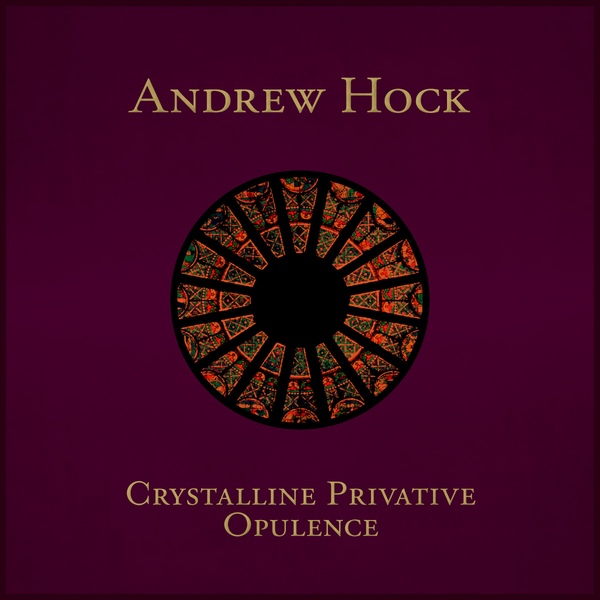 Andrew Hock has carved out a niche for himself as a guitarist for bands including Psalm Zero and the recently deceased Castevet, but this makes for his first truly solo release. Crystalline Privative Opulence, featuring additional wind instrumentation by Jeremiah Cymerman and Davindar Singh, showcases his skill with a guitar as well as electronics but more so his sense of composition amongst these two side-long songs.
Andrew Hock has carved out a niche for himself as a guitarist for bands including Psalm Zero and the recently deceased Castevet, but this makes for his first truly solo release. Crystalline Privative Opulence, featuring additional wind instrumentation by Jeremiah Cymerman and Davindar Singh, showcases his skill with a guitar as well as electronics but more so his sense of composition amongst these two side-long songs.
The first of the two untitled compositions begins quite simply, with melodic, basic guitar strums filling the air.It is sparse and clean, and he slowly expands the sound.The melancholy, yet pure guitar sound continues for a while before being quickly mixed with a quieter, but more dissonant and messy backing loop of processed guitar.At first the melodic sound continues, but then it is pulled down into the noisy mire of distortion and loops.
What first began as gentle chiming guitar soon becomes a din of harshness and chaos that is all engulfing.Hock begins to emphasize the electronics above all else, resulting in a piece that is much more violent than it began.Full on horror movie shrieks and bizarre warbling noises become the standard, and even what sounds like a swarm of killer bees are introduced to further conjure terror.
The piece on the other side of the tape is less oppressive or menacing in comparison.While the guitar was the predominant theme on the first half, here the focus is on ominous and distant electronics.Woodwinds generate deep foghorn tones expanding through the mist.Hock fleshes out the open, foggy space by reintroducing his guitar to the mix, clean and melodic strumming that contrasts the droning background exceptionally well.In a mirroring of the way the first piece was constructed, the electronics give way here for the elegant guitar work to take the focus.Eventually he introduces a second guitar line, with just enough distortion and effects to make for a great contrast to the otherwise pristine sound before ending with what sounds like a bass guitar passage.
Guitar and electronics are the primary sounds throughout Crystalline Privative Opulence, but it is the way Hock (and his two collaborators) put these sounds together that makes this tape memorable.The slow building of the compositions, as well as the deliberate shifts between electronics and guitar keep the sound intriguing.Texture and melody meld together wonderfully, resulting in two pieces that shift and evolve wonderfully on his first solo work.
samples:
 
Read More
- Administrator
- Albums and Singles
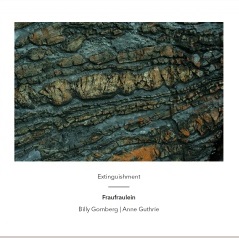 Two of the three songs that comprise Fraufraulein's Extinguishment start with a single foundational sound. On "Whalebone in a Treeless Landscape," it is Anne Guthrie’s French horn that initiates the performance. Dripping water and the ring of a large, resonant metallophone follow immediately after. "My Left Hand, Your Right Hand" commences with a solitary, almost piercing electronic pitch, like an emergency broadcast signal stuck on a single wavering tone. After a few seconds, it is joined by an echoey snap, a distant singing voice, and the booming of a bass drum or a floor tom. They are both deceptively simple beginnings, richer in content and potential than their starkness implies. Billy Gomberg and Anne Guthrie treat them like seeds from which to grow and prune their compositions. They blend field recordings, of rain and a patriotic Norwegian parade for example, with scrapyard detritus, pair foghorn drones with the bristly friction of surface noise, and balance the eerie ambience of humming wires against a distorted monastic chant, all while maintaining a delicate connection with those first embryonic moments. The way they achieve that consonance and balance—between the acoustic and electronic instruments and in the structures of the songs themselves—defines the album.
Two of the three songs that comprise Fraufraulein's Extinguishment start with a single foundational sound. On "Whalebone in a Treeless Landscape," it is Anne Guthrie’s French horn that initiates the performance. Dripping water and the ring of a large, resonant metallophone follow immediately after. "My Left Hand, Your Right Hand" commences with a solitary, almost piercing electronic pitch, like an emergency broadcast signal stuck on a single wavering tone. After a few seconds, it is joined by an echoey snap, a distant singing voice, and the booming of a bass drum or a floor tom. They are both deceptively simple beginnings, richer in content and potential than their starkness implies. Billy Gomberg and Anne Guthrie treat them like seeds from which to grow and prune their compositions. They blend field recordings, of rain and a patriotic Norwegian parade for example, with scrapyard detritus, pair foghorn drones with the bristly friction of surface noise, and balance the eerie ambience of humming wires against a distorted monastic chant, all while maintaining a delicate connection with those first embryonic moments. The way they achieve that consonance and balance—between the acoustic and electronic instruments and in the structures of the songs themselves—defines the album.
Extinguishment’s macrocosmic inclination is set down during the course of its opening piece, "Convention of Moss." Like the songs that follow, it is cobbled together from a combination of prerecorded audio and live instrumentation. Differentiating between live and prerecorded can be tricky, however. In concert, Anne and Billy play French horn and bass guitar respectively and use various digital methods to record and manipulate their own sounds on the fly. Thus, the white noise generated by blowing through a detached valve becomes a loop-able and transformable sample.
Watching it happen in real time makes following the aural lineage of different passages easier, but on record there can be no such discernment. Without a visual aid, the entire album, from the perspective of the listener at home, sounds as if it could be a series of prerecorded tapes arranged with a computer. On the other hand, it is possible that much of what seems digitally achieved is actually the product of an extended technique utilized inside the studio, like drawing corrugated wire across the bell of the French horn. There is simply no way to tell. Confusion like this renders the music’s canvas more absorbent, and new and unexpected elements enter the fray with the same ease and acceptance as a loud guitar solo entering a rock ‘n’ roll song. That is a feature in a lot of improvised electronic music, but Gomberg and Guthrie handle it gracefully and add something of their own to the equation, namely the derivation of structure and development from tone color and melody.
As wide open as Extinguishment is with respect to material, purpose and control still subsists in the duo’s dedication to form and spaciousness. After establishing a core sound or a core melody, Anne and Billy toy with it, adding harmonious elements to emphasize some of its features and introducing discord for the sake of contrast and equilibrium. Reshaping, repurposing, and reimagining those musical events is the secret logic behind each song, something that is made perfectly clear on "My Left Hand, Your Right Hand." The title hints at the way in which Gomberg and Guthrie mirror each other and the contents of their field recordings. The song’s opening high tone is first blended into, then replaced by a droning vocal melody. Next comes a French horn and voice duet, a high resonant whistle, and eventually an undulating pitch that could be either synthetic or acoustic. Each figure mimics the last one, maintaining some semblance of identity with what has passed while at the same time pushing the performance forward. At times, the field recordings seem to be in tune with the instruments and the electronics too, resonating at the same frequency or within the same key even when they are quiet or empty (think of the harmonic resonance of Alvin Lucier’s I Am Sitting in a Room).
All of this gives the music a tangible three dimensional quality. Anne Guthrie and Billy Gomberg connect the world outside to the world of music in a way that must by now be familiar, but they do an exceptional job of it, utilizing their tools and techniques to magnify apparently simple musical elements (and non-musical ones, too, if that distinction still holds) to the size of universes.
samples:
 
Read More
- Administrator
- Albums and Singles
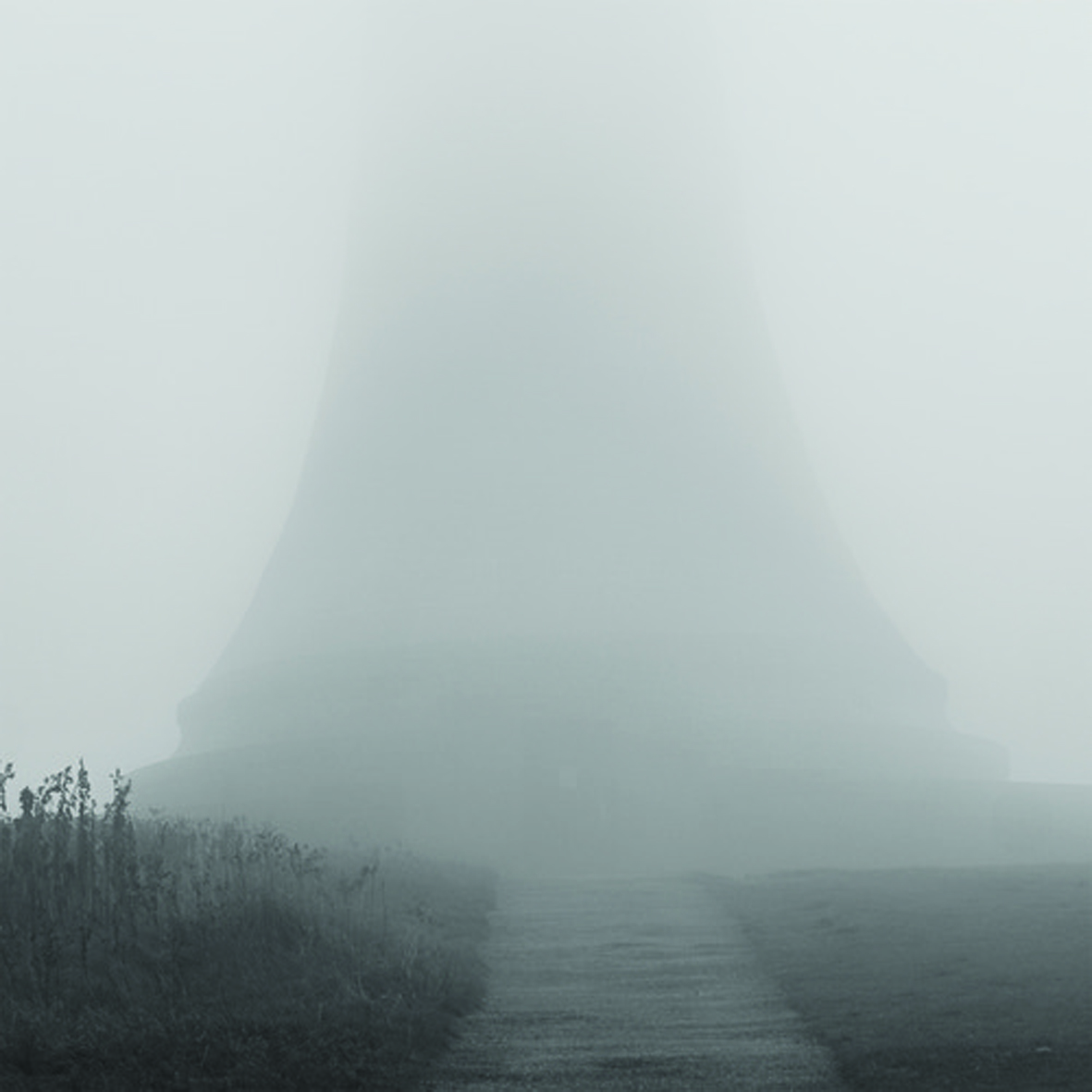 It is increasingly difficult to discuss Alex Cobb's career without invoking the name "Andrew Chalk," as the similarities between the two artists are impossible to miss.  For one, they both run fine record labels and they both make elegant, understated, and quiet albums.  More importantly, they both seem to share a curious drive to endlessly revisit the same stylistic thread in hopes of someday distilling it to absolute perfection.  That being the case, Chantepleure will absolutely not surprise anyone who has picked up any of Cobb's previous albums: it offers more of the same (which is quite good), but it is now a bit more sophisticated and nuanced than it was last time around.
It is increasingly difficult to discuss Alex Cobb's career without invoking the name "Andrew Chalk," as the similarities between the two artists are impossible to miss.  For one, they both run fine record labels and they both make elegant, understated, and quiet albums.  More importantly, they both seem to share a curious drive to endlessly revisit the same stylistic thread in hopes of someday distilling it to absolute perfection.  That being the case, Chantepleure will absolutely not surprise anyone who has picked up any of Cobb's previous albums: it offers more of the same (which is quite good), but it is now a bit more sophisticated and nuanced than it was last time around.
The word "chantepleure" means to sing and cry at the same time, which makes a lot of sense in this case, as this is probably as close to an Alex Cobb "break-up album" as we are ever likely to get.  Cobb's turbulent state manifests itself quite compellingly and uniquely throughout Chantepleure, as his languorous, billowing drifts of treated guitar are almost always haunted by the subtle specter of dissonance, particularly on the opening album highlight "Prayer Ring."  The importance of those buried, slightly curdled notes cannot be overstated, as Cobb's warm, blissed-out tranquility otherwise rides the fine line separating "beautiful" from "dangerously pastoral."Cobb has found a way to artfully infuse his soft-focus dreaminess with just the merest hint of mystery and anguish, which is very tough balance to hit just right.
Cobb's execution is also superior.  On pieces like "Anselin," his shimmering clouds of edgeless, formless guitar heaven feel so natural that they seem like their own living, undulating entity than something coaxed out of an instrument by a human.Alex never lets his work become static or conspicuously composed; rather the fragile individual strands constantly swell, dissipate, wax, and wane to form a complex tapestry of tones, overtones, and shifting harmonies that remains in a deliciously constant state of flux.  That seamless, organic quality is what primarily keeps me coming back to his work.
If Chantepleure has any flaws, they are highly subjective ones.  As mentioned earlier, it is quite a serene album, which is definitely is not for everyone: the album’s side-long closing centerpiece, "Path of Appearance," for example, takes a very long time to betray even a hint of a darker undercurrent.  The other caveat is that Alex's artistry is so dependent on nuance and small-scale dynamic shifts that it can be very hard to get into without sufficient will and patience.  There is no overt power, melody, textural variation, simmering tension, rhythm, or dynamic arc to latch onto with any of these pieces, which would make them very boring in less skilled hands.  In Cobb's hands, however, such obvious "hooks" are absent because he is simply working on a different plane–Chantepleure is absolutely teeming with compelling small-scale harmonic activity, but it takes some focus and attention to detail to reap those rewards.  I always appreciate that in an album.  In its own small way, Chantepleure is a bulwark against an increasingly fast-paced and superficial world, reminding me that there is always hidden beauty in the world if I slow down enough to take notice.
Samples:
 
 
Read More
- Administrator
- Albums and Singles
 While they differ quite a bit in scope, concept, and volume, Carsten Nicolai's Xerrox series is a long-running and intriguing digital parallel to William Basinski's analog experiments in tape decay, taking samples and using custom software to make copy upon copy until the original sounds are deteriorated into unrecognizability.  The theme for this particular volume is "towards space," which leaves the earthbound inspirations of the first two volumes far behind for a nostalgia-soaked fantasia on the science-fiction films and shows that Carsten fondly remembers from his childhood.  Unsurprisingly, that results in an album that sounds an awful lot like a soundtrack, but it is an unexpectedly poignant and curiously neo-classical one.
While they differ quite a bit in scope, concept, and volume, Carsten Nicolai's Xerrox series is a long-running and intriguing digital parallel to William Basinski's analog experiments in tape decay, taking samples and using custom software to make copy upon copy until the original sounds are deteriorated into unrecognizability.  The theme for this particular volume is "towards space," which leaves the earthbound inspirations of the first two volumes far behind for a nostalgia-soaked fantasia on the science-fiction films and shows that Carsten fondly remembers from his childhood.  Unsurprisingly, that results in an album that sounds an awful lot like a soundtrack, but it is an unexpectedly poignant and curiously neo-classical one.
It is an old music critic trope that artists tend to become less special once they become competent enough at their craft to sound like the artists that they were always trying to emulate.That thought ran through my head a lot as I listened to this album, as I suspect that Nicolai always secretly wanted to be a soundtrack composer, but grudgingly wound up as a successfully conceptual artist/experimental musician instead.As it turns out, he has a knack for the former vocation, as the lush and melancholy faux-strings of album highlights "Xerrox Helm Transphaser" and "Xerrox Isola" call to mind some of Jóhann Jóhannsson’s better work.Elsewhere, however, Carsten veers into sci-fi-damaged heavy drone ("Xerrox Radieuse") or brooding, echoing dark ambient atmosphere ("Xerrox Mesophere").
Despite touching upon so many disparate stylistic veins, the album admirably maintains a consistent "haunted space station" feel that befits one of its primary inspirations: Tarkovsky's Solaris.The only catch is that I do not understand how the resultant music is related at all to the elaborate process used for its creation.  For the most part, Xerrox, Vol. 3 sounds like it could have easily been made with a synthesizer and a laptop, aside from a few especially hissing or sputtering textures–whether a chord was played on a keyboard or borrowed from a McDonald's commercial seems largely irrelevant here.  That does not diminish the album in any way, but it is odd that Carsten elected to make a somewhat straightforward album in such a complicated, concept-heavy way that does not seem to have noticeably informed the outcome.My guess is that he has just made exploiting chance and impersonal technology a life-choice and that he finds the constraint useful.
Another noteworthy aspect to Xerrox, Vol. 3 is that the most conventionally musical moments tend to be the best.I did not expect that.  While pieces like "Xerrox Helm Transphaser" certainly benefit from their gurgling, hissing, and crackling peripheral textures, the primary appeal lies in the warmly melancholy swells of appropriated strings.Carsten is at his best when he finds a strong balance between melodic hooks, texture, and entropy, which he does about a third of the time.The rest of the album is a bit less memorable, but that is primarily because he is aiming for a subdued and mysterious mood rather than due to any clumsiness or lack of good ideas.That makes Xerrox, Vol. 3 somewhat complicated for me, as it is a complete success as a complex and understated work that is alternately sublime, bittersweet, and forlorn.  That makes it a major leap forward for Carsten as a composer.  It also makes it an objective success from start to finish.
Subjectively, however, I have very mixed feelings about it.   I love the bleary, corroded Romanticism of "Xerrox Isola" and quavering beauty of "Xerrox Radieuse," both of which wildly exceeded my expectations.A few other pieces are quite good as well.Overall, however, Xerrox, Vol. 3 seems like a weirdly tame album to me–I like it for what it is, but it is a bit disappointing as a long-awaited Alva Noto album.I desperately wanted to like it more than I did.That said, my personal expectations are not Nicolai’s burden–he naturally made the album that he wanted rather than the album that I wanted.  In a couple of instances, those expectations overlap delightfully, but this is otherwise not the six-years-in-the-making tour de force that I was hoping for. However, I suspect that a lot of other people will rank this very highly within Carsten's discography and I cannot fault them for that at all–I am sure that their ears work fine.  This just is not the direction for me.
Samples:
 
 
 
Read More
